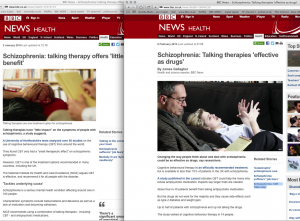Same number of workers being caught on drugs?
The Herald said, on Friday “Fewer workers stoned on the job”
Information from the New Zealand Drug Detection Agency showed 81,410 on-site drug-screening tests were carried out last year, 16 per cent up from the previous year.
But only 5.5 per cent of tests showed the presence of drugs, down from 6.4 per cent in 2013
As usual, there’s no mention of the fact that NZDDA is just one of the private companies offering drug testing services. It took me a long time to realise this, until I was tipped off by a news story advertising one of their competitors.
Presumably NZDDA don’t think their customers choose them at random, and with no real reason for wanting testing. If customers were behaving even a little rationally you’d expect an expansion of drug testing to pull in lower-risk employees. If we look at the actual number of positive tests, using the quoted figures, it was about 4480 last year and about 4490 in the previous year. Given no change in the number of positive tests and a 1 percentage point change in the proportion of positive tests, from a single company, there’s not a lot of numerical evidence for an increase in number of workers with detectable cannabis in their systems.
More importantly, there’s no evidence whatsoever for the ‘stoned on the job’ headline: absolutely no information is given about this. One of the big problems with cannabis testing is that there is no useful biochemical assay for being stoned. Detectable levels persist long after impairment is over, and even when you’re actually stoned there is not a good relationship between drug concentration and impairment. This is a real problem for Washington and Colorado, which have legalised cannabis and need to set driving laws. In contrast to alcohol, if you actually care about safe driving and cannabis, it’s really hard to get a useful and objective test.
The story ends with two examples of disasters. In one, cannabis was definitely ruled out as a contributing factor; in the other, the conclusion was only that “it could not be excluded”. The NZDDA press release is at Scoop, and despite how the story reads, there is surprisingly little text in common.

